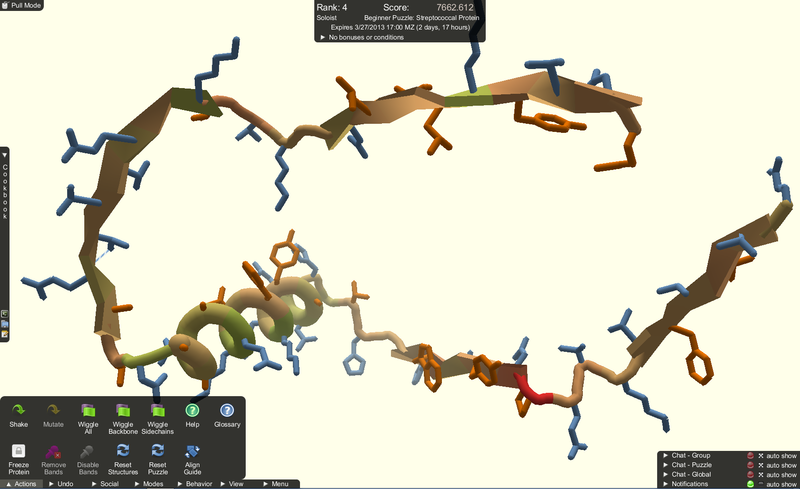Jamie Banks’s Updates
Gamification in Education
Gamification has been applied to many domains, from on-the-job training for search and rescue operators, to Starbucks' rewards program, to education. While it is fairly new as a research topic in education, game companies have been creating "educational games" since the beginning of video games, like Reader Rabbit and touch typing skill-building games. The games do not even have to be digital. Have you played "Jeopardy" in your class to review for a quiz? Then you gamified the learning in that lesson. In this sense, we have always had educational games in our classrooms.
For proponents, the justification for gamification in education relies on people's alleged inherent competitiveness, the need for fun as a motivating factor in the classroom, and simply the amount of time--up to 3 hours a day by some estimates - that the average student spends playing video games. For detractors, gamification has not proved that it is serious enough, the research is spotty and not based on enough cognitive psychological theory, and gamification is a buzzword and a marketing scheme more than good pedagogy.
Perhaps the best way to find out your own position on gamification, though, is to investigate the resources available for practical use in the classroom and try it out in your classroom. Full-fledged games that you create yourself are at one very intimidating extreme of time commitment; however, there are ready-made games and systems in place that you can try in your classroom immediately. For example, http://www.duolingo.com gamifies language learning by having students earn points and level up as they practice vocabulary, reading, pronouncing, listening, and writing. It is also social: students can "add" their friends and compete against them - a common feature in many games, inspired partly by Massively Multiplayer Online RPGs and many social mobile app games.
Students are also helping to translate the Internet by using Duo Lingo, which points to another common feature of modern educational games: they help out in some small real world way, whether, like FreeRice.com, they donate rice for every vocabulary word you answer correctly, or like the protein folding game Fold It!, they help scientists find protein structures more quickly using human intelligence to supplement their algorithms.
In some cases, educational games involve applying typical game mechanics, points and rewards systems, competition, and storyline to educational content and objectives. This is the case for older games like Reader Rabbit, and newer games like Sim City or Civilization. However, other games for education are based in a sort of "sandbox" approach, where students learn by building their own levels and worlds, whether building ancient cities or biomolecules. Minecraft's Creative Mode has inspired a particularly rich set of tools and educational games, like MolCraft from the University of Hull to give students rich, interactive 3D views of molecules and their components. A whole Twitter presence has grown up at the hashtag #minecraftedu to share gamified learning resources that use Minecraft: this is typical of the tech-minded and open-minded teachers who are early adopters of gamification.
While the theory and the jury are still out on gamification in the research literature, I believe it is a useful area to explore and at least reflect on and try out in your own classroom, whatever your comfort level with video games and technology. Remember, you can start simple with things like a review game or a community points system for behavior, facilitated by a simple site like ClassDojo.com.
References:
"The Science Behind Fold It." (2016). Accessed Aug. 1, 2016 at https://fold.it/portal/info/about.
Jozuka, Emiko. (2015). "This Minecraft World Teaches Kids the Basics of Biochemistry." Vice. Accessed Aug. 1, 2016 at http://motherboard.vice.com/read/this-minecraft-world-teaches-kids-the-basics-of-biochemistry.




This is a big topic and I have written my own Update on the subject. Although I have yet to try much gamification in my classes, I am eager to learn more and get more ideas about how to proceed.
Great update! There are so many wonderful tools to be used alongside duolingo: lingvist.io
I discovered it a few days ago. I shared it with my students and they are loving it! I use it to freshen up my French as well.
New subject for me, but very intriguing. One of the aspects of gaming I have experimented with is the Common Ground for Action platform of Kettering Foundation and the National Issues Forums Institute which uses a gaming concept to explore serious social issues. See: https://www.nifi.org/en/common-ground-action, and the home sites of www.nifi.org, and www.kettering.org.
very good submission, well written and interesting indeed. especially for people like me who are not too familiar with the concept of gamificion in education. good work!
I have in fact tried Jeopardy in my classroom, by using the online app Kahoot. This is is a subject I care about a lot. Well written!
Dear Jamie, your update is engaging and interesting, in its prose that challenges the reader to try things, its newness (at least to me), and the graphics you present that really draw me in and make me want to go and try these games for myself. As a teacher of social work, I am wondering what kind of games I or the students might create (other than competitive debates) that would help students to actually learn social work practice skills. This is something for me to really think about, and after reading your post, I want to do it! Thanks so much. Howard robinson